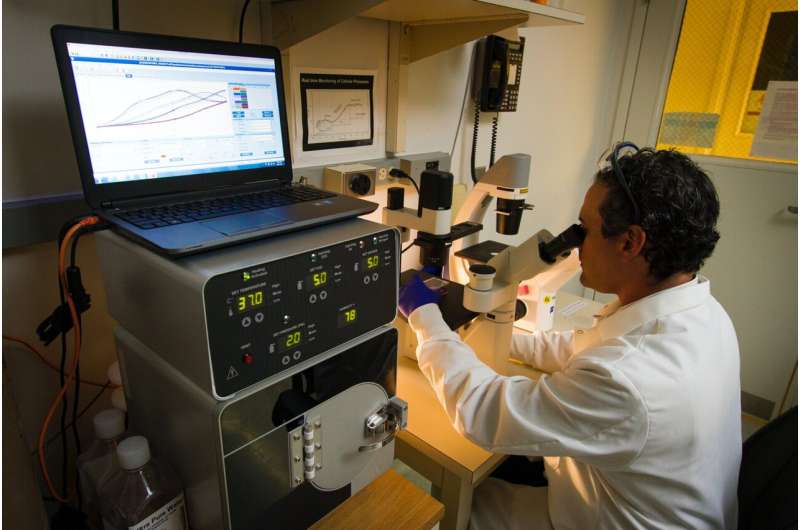This article has been reviewed according to Science X's editorial process and policies. Editors have highlighted the following attributes while ensuring the content's credibility:
fact-checked
trusted source
proofread
Study compares health information exchange data versus patient self-reports to measure cancer screening uptake

Knowing which populations are following cancer screening guidelines is important to public health officials and policy makers as well as researchers developing strategies to improve adherence. A recent study is one of the first to compare using health information exchange (HIE) data with patient self-reported data as a means of gathering this intelligence.
The researchers found that completeness of information differed by data source and screening test. HIE data provided more information than patient self-reports about laboratory screening tests such as the fecal occult blood test for colorectal cancer screening and the human papillomavirus (HPV) test for cervical cancer screening. Patient self-reports provided more additional information than HIE data about cancer screening procedures such as colonoscopy or mammograms.
The most robust measurement approach involves collecting both HIE and self-reported screening information to draw upon their different strengths according to David Haggstrom, M.D., MAS, of the Regenstrief Institute, Indiana University Melvin and Bren Simon Comprehensive Cancer Center and IU School of Medicine. He is senior and corresponding author of the study.
More complete population data over time detailing cancer screening across populations—broken down by geographic area, racial or ethnic groups or age range—can help researchers, public health officials and policy makers gain more nuanced understanding of how many people within each population are receiving recommended screenings, which screenings, and at what intervals. This information can then inform targeted outreach efforts to improve screening of as many eligible individuals as possible.
Unlike electronic health records (EHRs) which typically contain information from a single health care setting or system, HIE data comes from numerous sources. A report of an individual's screening at a facility in a health care system different from where primary care is received may not make it into an EHR but could be included in the data available from an HIE.
"We need to help people keep track of whether they are receiving services that may benefit their health and be aware of when those services come due, and to make sure that people who are eligible are being offered them," said Dr. Haggstrom. "In the case of cancer screening, our clinical goal is to increase the likelihood of detecting a cancer early at a time when it could be treated more successfully than if it were detected later without screening.
"Our study was uniquely possible due to the data infrastructure created by the Regenstrief Institute and managed by the Indiana Health Information Exchange to better support the health of residents of Indiana," added Dr. Haggstrom. He notes that HIEs in other states are in various stages of development, comprehensiveness and completeness.
"Comparison of health information exchange data with self-report in measuring cancer screening" is published in BMC Medical Research Methodology.
More information: Oindrila Bhattacharyya et al, Comparison of health information exchange data with self-report in measuring cancer screening, BMC Medical Research Methodology (2023). DOI: 10.1186/s12874-023-01907-7



















